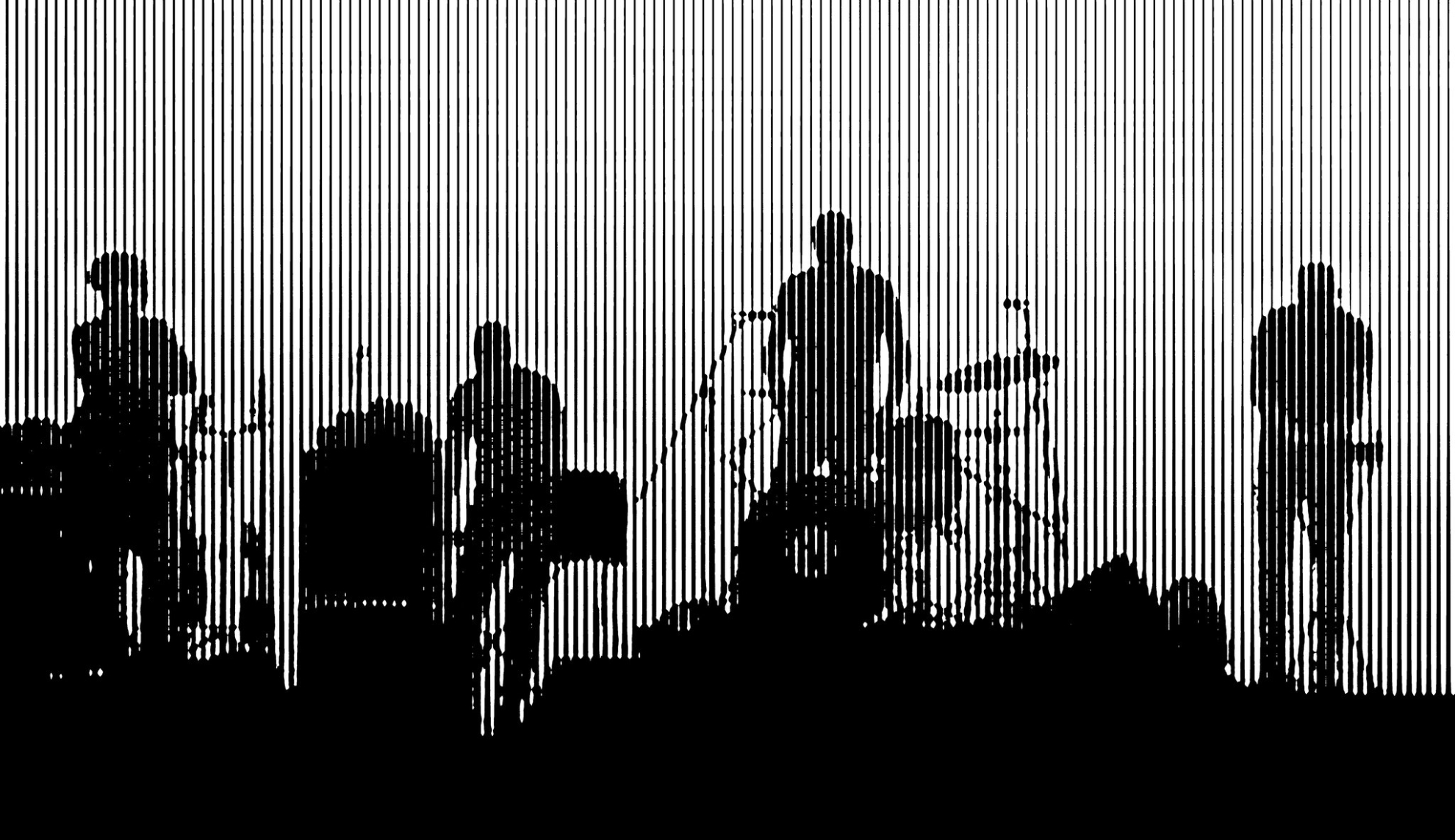Interview by Agata Kik
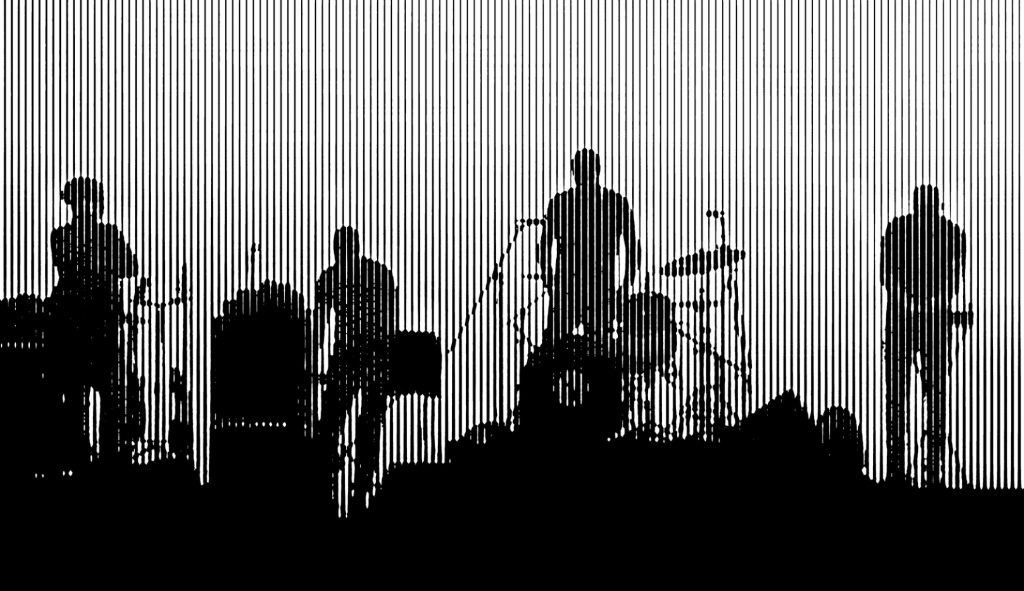
Fly Pan Am originated in Montreal’s late 90s music scene. The group electrified together with the city’s rock bands emerging and vigorously experimenting there back then. Fly Pan Am has been releasing their work under Constellation Records, a Canadian independent record label known for cultivating Quebec’s post-rock underground music world from the nineties through the noughties until now, when their commitment to experimentation and depth and depth of unique hand-made packaging continues thriving.
Working against artistic commodification and capitalist tendencies in the music industry, Constellation Records secured Fly Pan Am against the murky mainstream morale and granted their independence in expanding their experimental sonic oeuvre. When, in 2005, the group went on hiatus, its members continued their experimentation in multiple diverse directions. They reunited after 14 years to perform live in Montreal again in 2018.
Fly Pan Am’s working methods are distinguished by their particularly collaborative character. Since their beginnings, the group has released and produced live work with many other artists. In addition, they shared their earliest shows with instrumental groups like Exhaust, Godspeed You! Black Emperor, The Shalabi Effect, and Alexandre St-Onge (as part of Constellation’s concert series Musique Fragile).
Subsequently, Fly Pan Am teamed up with electronic artists, including Tim Hecker and Christof Migone. Their collaboration on their latest album Frontera (Constellation, 2021), is incredibly unique. Fly Pan Am conceived the music in close collaboration with renowned choreographer and dancer Dana Gingras and her Montréal-based dance troupe Animals Of Distinction.
Frontera is an explosive exchange between the physical and the energetic; it is a dialogue between movement and sonified space. The multimedia piece also employed elaborate lightning design by United Visual Artists, awakening one’s awareness of another layer of invisible control of the social system.
Unfortunately, having started live touring Frontera in early 2020, Fly Pan Am’s performances were suddenly halted by the pandemic, another wall, another frontier to overcome. This was the time for the group to innovate their sonic output even more. Connecting with producer Radwan Moumne, they put the album together despite the dramatic disconnectedness of the long lockdown days.
The album, which constitutes the soundtrack of the choreographed dance, can recreate the ambience of physical containment and suffocating space whenever played by the listener. The studio album leaves one in sweet suspense, a familiar mental state on the one hand and sourly saturated by the strange and the unwanted on the other. Inspired by the Situationist International’s idea of détournement and interest in ‘dysfunctional propositions’, Fly Pan Am interrogates the present moment, musically mixing motorik with the electronic or juxtaposing the images of the past with their future antagonisms.
The sounds in Frontera could not evoke contemporaneity’s chaotic control in a better way. Emphasised by the repetitive character of minimalist rock beats with synthetic beeps of electronic appliances, the tracks enter the listener. Yet, at the same time, at points solidify their bodies, to then surprisingly shake them to dissolve any idea of identity, diving more profound in this way to get closer to the essence of what human existence is NOW. Loyal to their very own inner ear, honest following their intuitive self, contemporaneity is something that makes a stand out the music output of Fly Pan Am.
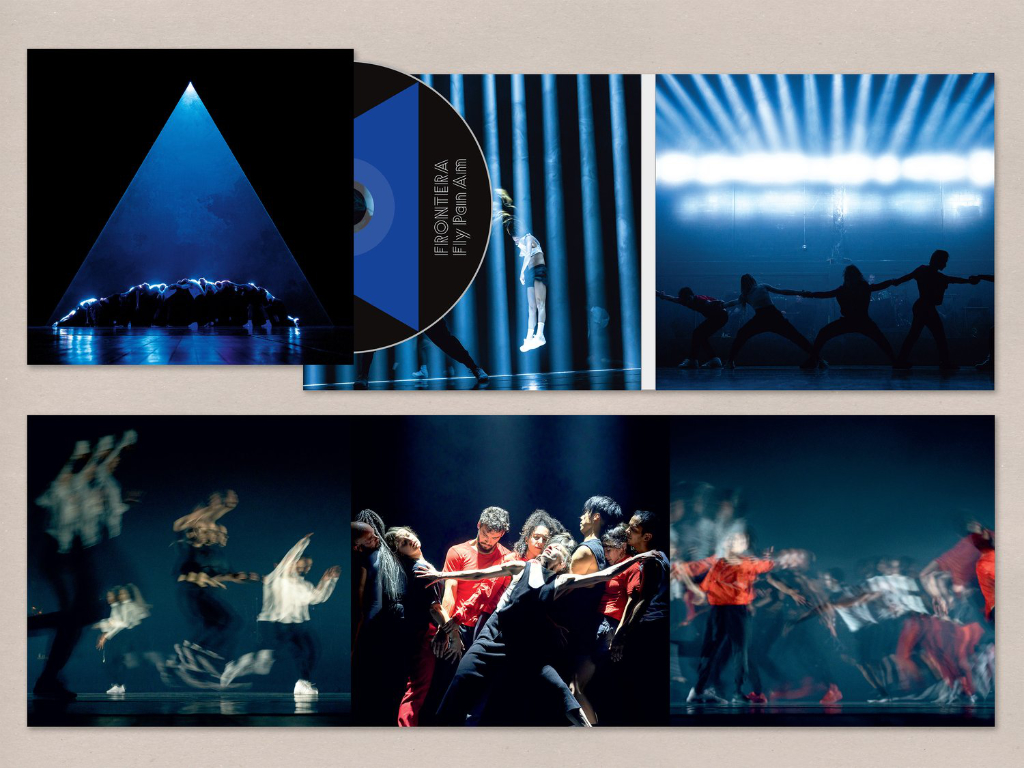
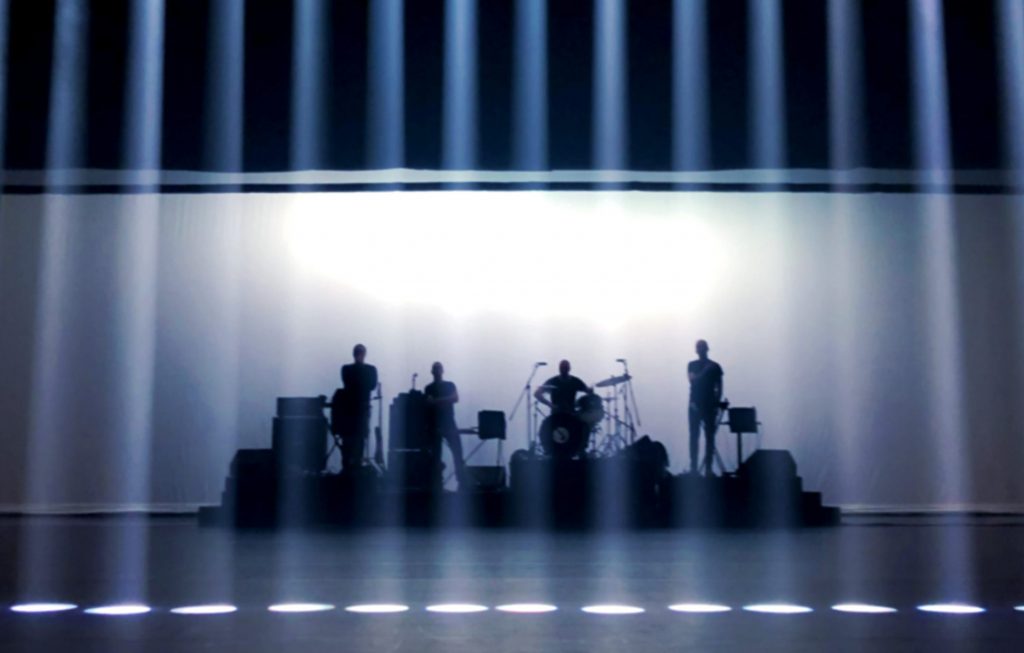
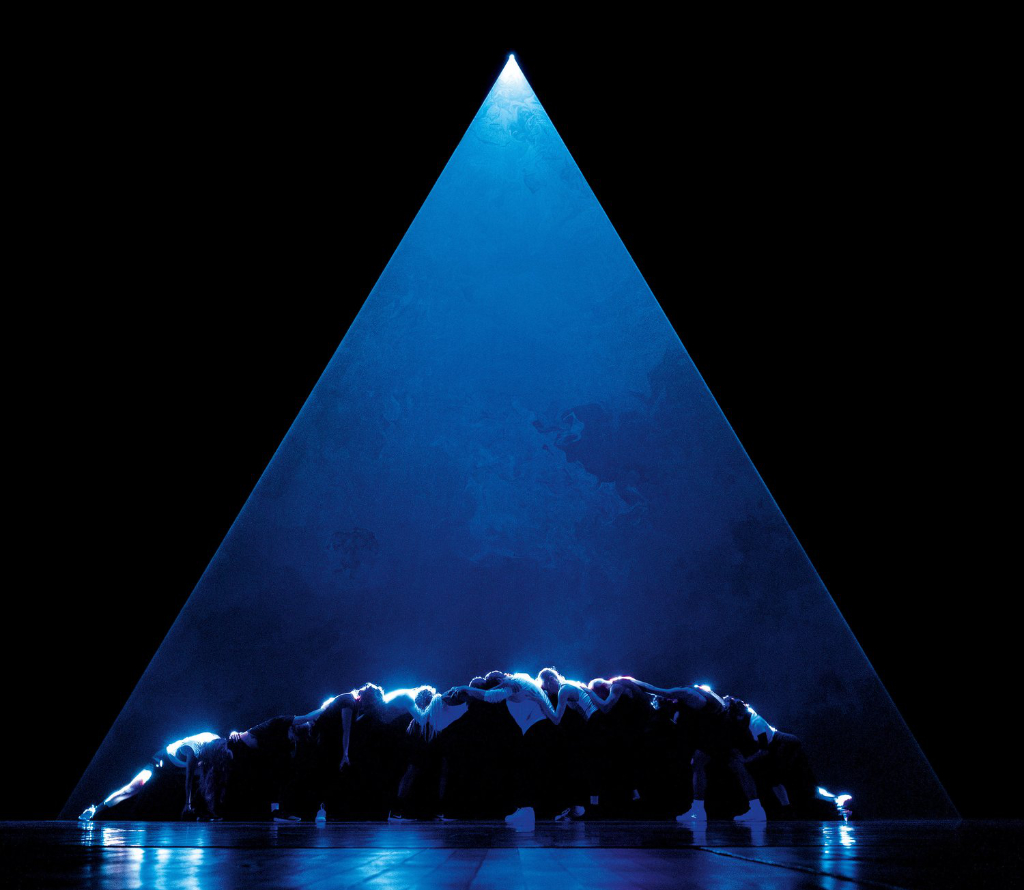
Speaking of your moniker – Fly Pan Am – could you tell us more about the symbolism behind your chosen name and how it plays into your overall creative philosophy and creative values?
Roger: There isn’t necessarily a symbolic meaning to the name itself. It was chosen one night when we were watching the movie W.R.: Mysteries of the Organism by the Serbian director Dušan Makavejev. In one of the scenes, there is this poster in the background with that slogan on it, and it just clicked for us. So we wanted a catchy name that would sound like a slogan, something that would have a kind of pop art vibe to it. It’s weird because a good many months after we chose that name and played our first gigs, Labradford’s Mark Nelson released his first record as Pan American, and we were so bummed; ha ha!
We thought everyone would think we ripped the name off of him. But to answer your question, our choice for this name reflects an aspect of our creative philosophy, as we’ve always been interested in some way with the situationists’ idea of “détournement”. All through our records, we’ve explored this idea of hijacking certain pop idioms/tropes and somewhat transforming their “meaning” by juxtaposing them with aesthetics that don’t normally suit them or don’t “work properly”. We have always been very interested in the idea of dysfunctional propositions, so we thought it was funny and interesting to have a name that sounded lively and accessible, while our music was often obtuse and difficult.
Fly Pan Am was reunited in 2018 for a performance in Montreal for the first live show in 14 years. How has your creative process and/or you evolved personally and professionally / what have you learned during this hiatus?
Jonathan: We’ve learned a lot. I would say on many different levels. First, it is important to mention the impact of radical changes in the music endeavour of the early 2000s. It had a powerful impact on the general music culture to every extent. For instance, we were witnessing the collapse of the physical audio support towards data-oriented audio devices like mp3. Indie record labels were merging with major record labels who themselves also were merging with absurd corporate entities.
There was also the democratisation of technology that surely transform significantly the sound art and music landscape. And that is just mentioning a few effects. I mean, each of us started to work with computers for the first time, individually, in our own musical practices. We kept in touch over the years, and we were listening to each other’s work enthusiastically.
Fly Pan Am’s fascination for hybridity and parallel universes in music was suddenly on the table again, and the idea of potentially working together again was definitely popping up in the back of our minds. Basically, we learned that maybe Fly Pan Am had another shot at creating material again, feeling the motivation to pick up where we left off with N’écoutez Pas in 2004, which we had initially thought as the completion of our visions and wills.
And how have you seen your involvement and perception of the experimental scenes transform throughout the years?
Roger: Wow, so much has changed I wouldn’t even know where to begin. I’d say the biggest change that strikes me is that the democratisation of technology has generated this constant flow of new bands/artists, which has resulted in a kind of overflooding of culture, where everyone now has a huge attention deficit disorder since they’re constantly being bombarded with new releases every week through their news feeds and all that. Music writers are incessantly approached for reviews by a ton of bands.
So if you don’t fit the current trends, your work can get easily lost in the shuffle with very little hope of one day finding its audience since people keep moving on to the next thing. This hasn’t necessarily affected us in the way we approach the music we make since we’ve always kind of just followed our own path anyways. It’s a very complicated dynamic to interact with and isn’t very interesting to us. We’d rather focus all our energies on making music that we find stimulating and connecting with like-minded folks out there.
What are your main inspirations for your productions these days?
Jonathan: Our inspiration these days, without being too dramatic, might be an interesting and meaningful interrogation. But it’s alive. I will not surprise anyone here by mentioning that the pandemic has triggered us to think differently. I would say that we are acknowledging the comprehensive component of what it means to be in a band at the moment. It’s a very general answer, but I feel there is sometimes a need to be more reserved and unspoken about musical production. I would also say that Fly Pan Am might do things differently in the future.
On record projects as well as on live projects. I sense the band is starting to establish something interesting since we put out “Mirror Cracks Seeking Interiority” last year as part of the Constellation Corona Borealis series in the wake of the confinement. Fly Pan Am conceived this piece differently from how we normally work; we became more idiosyncratic by individually composing the three parts of the piece and also by directing other members’ involvement. So under that stint, it might be an intriguing way to explore how we approach composition in the future, with a more in-depth process and more resources for what is to come.
Your new album Frontera captures the bristling, sculpted, intensely evocative live score resulting in an immediate dose of krautrock polyrhythms and searing guitar, interspersed with atmospheric soundscapes and glitched-out musique concrète; What was the intellectual process for the development of the album like?
Roger: This record, in particular, is probably the one we’ve done that relied the least on any kind of intellectual process; it started with Dana, the choreographer, giving us a playlist of music that she’d been using with the dancers in rehearsals to generate material. It was very important that we pretty much follow the bpm of some of the key tracks to develop our material, so that ended up determining a big part of the material without us even thinking much about it.
Also, since we were scoring this for someone else, we decided to put aside our artistic considerations, which are usually more intellectual, and focus on music, timbre and mood to ensure that the music would serve the overall work and Dana’s vision. Of course, we brought our aesthetic vocabulary to the table, but our approach was mostly intuitive and resulted from trying out a bunch of ideas and sticking with what worked best for everyone involved. The record itself pretty much translates what we played live with the dancers every night, but the pieces have been shortened to fit the LP length.
Also, what were you exploring at the technical level?
Jonathan: It’s hard to answer that question without responding at a personal level. It may sound disconnected, but for me, the exploration, even at the technical level, is a very intimate process. I do not think anyone in the band explores sound composition in the same way. We do influence each other but more in an aesthetic way, so to speak.
So to answer as a band here, we need to respond in a generic way. Fly Pan Am continuously tries to mutate our physical instruments to variable new ones. With a “whatever it needs” attitude. So we use resources like software, audio effects, hardware, and synthesisers as instruments and as extensions of our instruments. In the Frontera procedure, I can say that the band used computers to the extent that one guitarist is now exclusively playing guitar samples and sequences with his MIDI controller at the cost of the disappearance of his physical guitar.
The Other guitarist uses a guitar as a multichannel interface triggering “conventional” audio-to-amplifier processing simultaneously with a computerised synth sound. There was also a very extensive exploration of rhythms from our bass player, who was interested in exploring programmed drums to connect with our live drummer and ensure we had a consistent bpm for the dancers or in other media aspects of the show.
Frontera is developed in close conception and collaboration with Dana Gingras and her dance troupe Animals Of Distinction; how was the experience of working with her? How did she complement your work?
Félix: The experience was super fun and rewarding. Dana guided us through the whole process proposing ideas and refining the moods of the music we came up with within the practice space beforehand. Less involved but equally important was composing live while the dancers rehearsed the different movements before us. How they moved influenced how I played some of the beats and the overall music.
How was your experience composing music for a dance piece? And how different or not was your usual creative process?
Félix: The creative process completely differed from our usual way of working. Instead of thinking about conceptual musical ideas from scratch and doing whatever we wanted with them, we were working with pre-existing concepts, BPMs and moods. The structure of the songs was sometimes dictated by a particular moment in the choreography that wasn’t necessarily easy to count, like when playing a regular rock composition.
We had to rely on visual cues from the dancers and from each other instead of just going through the same composition mechanically every night like a regular rock show. The songs were a bit ‘elastic’; for example, if the stage was bigger in a town, some parts would take longer for the dancers, thus stretching the time of certain sections. The band and the dancers were in total symbiosis on stage, and composing the score in those circumstances was interesting.
What is your chief enemy of creativity?
Roger: Worrying too much about being “relevant”. It is so much better to make work that might fall on deaf ears, knowing that you responded to what was really calling you, than to tune your creative impulses in the hopes of finding a place since nobody has any objective authority over what is going on anyways, they only have the power you feed them.
You couldn’t live without…
Félix: Speaking for myself and in keeping with music and the band, I would say I couldn’t live without discovering new music, old or new, as long as the sounds, approach or style is fresh to my ears. I can’t just listen to the same genre of music or artists all the time. I am sure it’s similar to the other members of Fly Pan Am.

